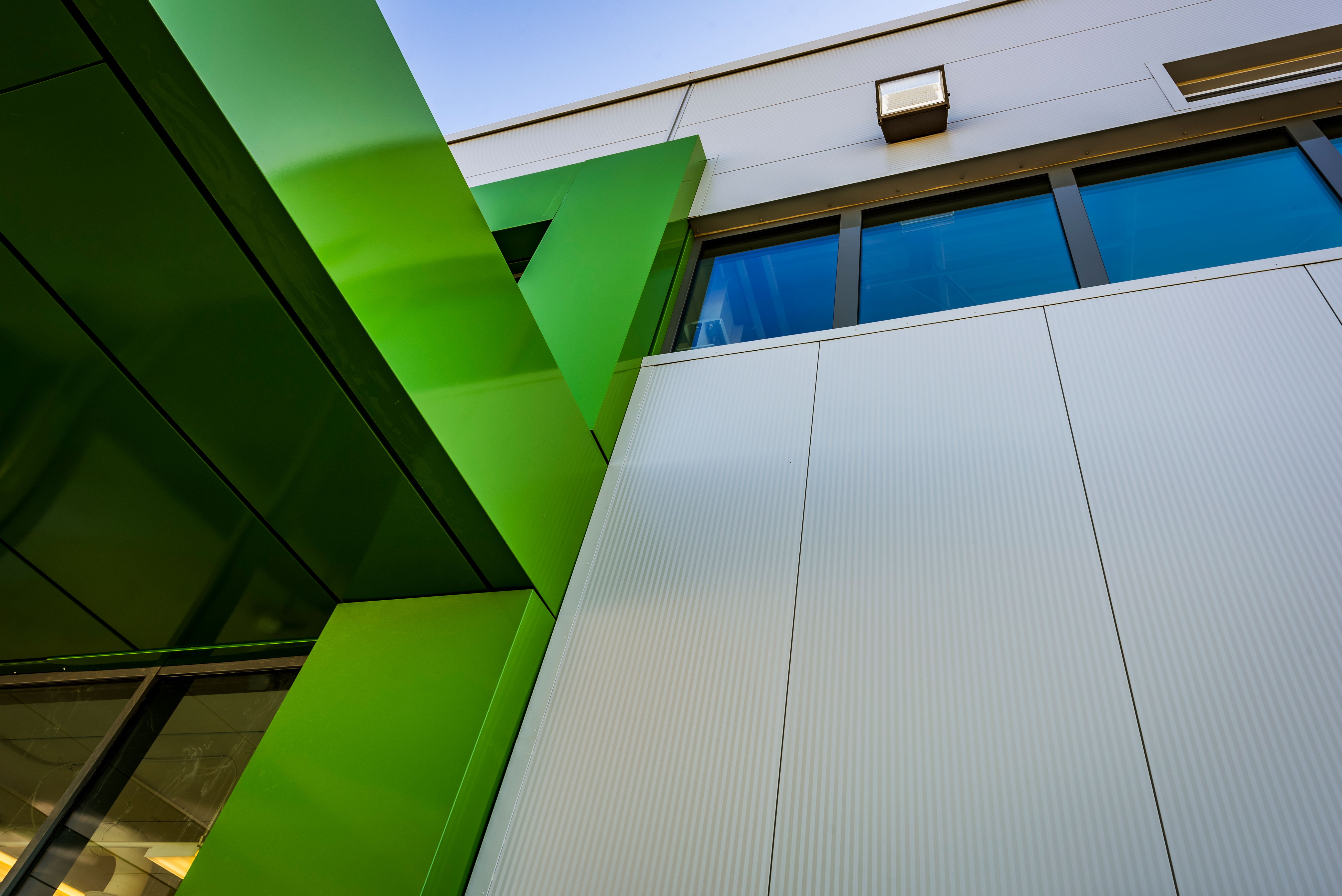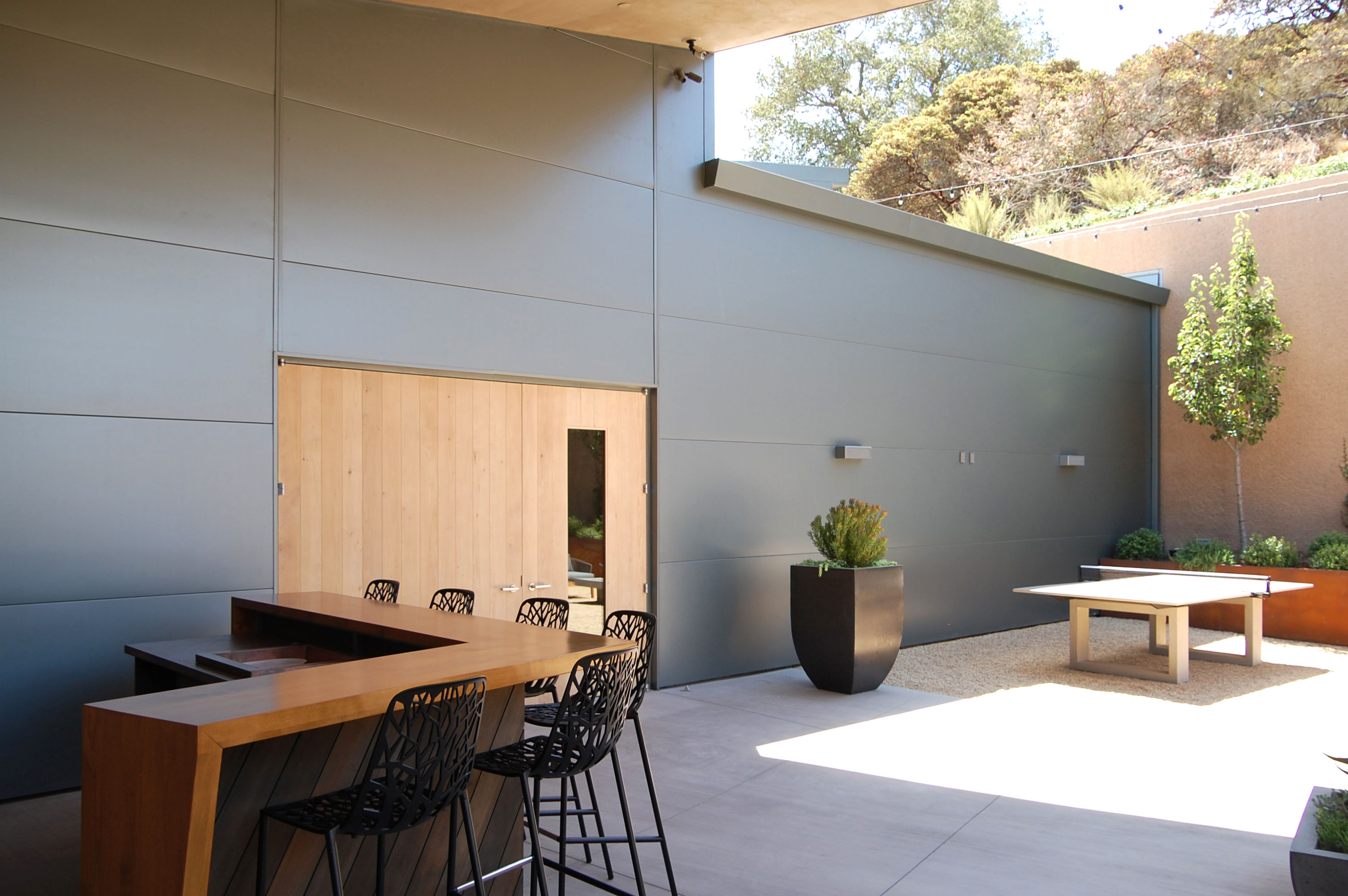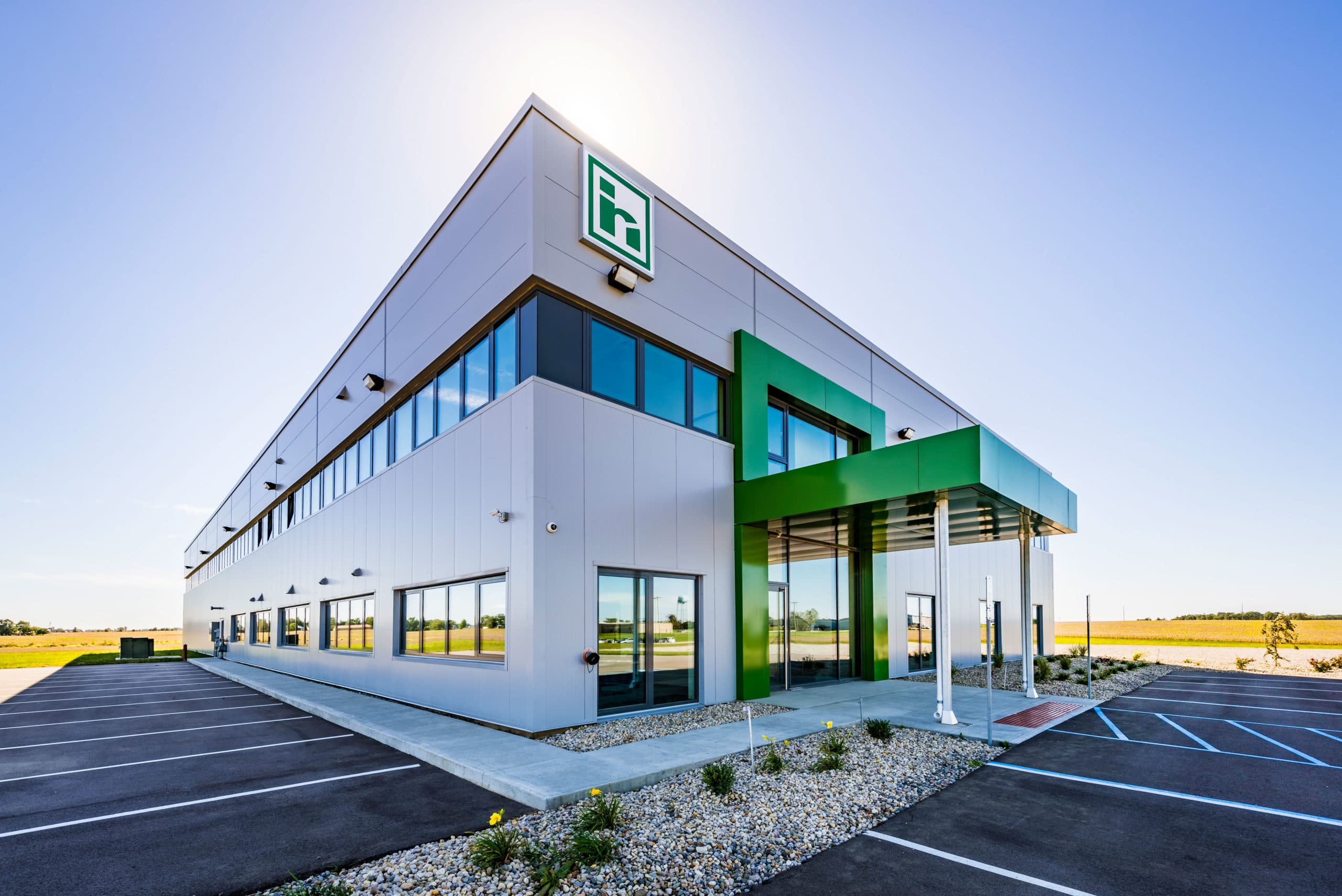
All Weather Insulated Panels save time and money as they require less specialized equipment to install and are a snap to fit together. [Photos: Courtesy of AWIP]
Say goodbye to unnecessary energy loss with All Weather Insulated Panels—the first in North America to use Honeywell’s new Solstice Liquid Blowing Agent for superior insulation in North America
 Download a PDF of this story.
Download a PDF of this story.
To learn more, visit All Weather Insulated Panels
When HALDRUP GmbH, a Germany-based farm equipment manufacturer, broke into the North American market, they had just one requirement: their new plant should be constructed of insulated metal panels (IMPs). IMPs, like the ones All Weather Insulated Panels (AWIP) provided for the new plant, are a staple in European construction, where they are beloved for their economical value, easy assembly, and fantastic insulation properties that keep energy loss (and costs) low.
“Metal panels make it possible to get the building operational quickly,” says Rüdiger Hofmann, owner and civil engineer at HALDRUP. The speedy assembly of these insulated metal panels ended up saving HALDRUP from falling behind schedule when frozen ground prevented them from digging the building’s foundation. The panels require far less specialized equipment to install and, due to their self-aligning, tongue-in-groove joints with concealed fasteners, they are a snap to fit together. The streamlined construction meant the project could be completed on time, even with the setback.
Hofmann also insisted on the IMPs for environmental reasons—their high-performing energy efficiency is another reason they are widely used in Europe, where energy costs are generally higher. Here in North America, AWIP’s products protect against energy loss with a tightly sealed building envelope that keep outside weather, whether humid or dry, from interfering with the interior climate. And they are now even more efficient thanks to the addition of Honeywell’s Solstice® Liquid Blowing Agent (LBA). The new product fills even the tiniest gaps in the already drum-tight composite with hydrofluoroolefin technology–enabled closed-cell foam, preventing the loss of hot and cold air from buildings. Honeywell and AWIP are the first to introduce this blowing agent technology for insulated metal panels to North America.
GREEN GLOSSARY
California Public Utilities Commission
- Controls public utilities in California. Issued an aspirational goal in 2008 that all new residential construction would be Zero Net Energy by 2020 and that all commercial construction would be ZNE by 2030.
Honeywell Solstice® Liquid Blowing Agent
- Honeywell’s new liquid blowing agent, based on hydrofluoroolefin (HFO) technology, provides closed-cell foam with many of its performance characteristics. It creates superior insulation for commercial and residential use.
Significant New Alternatives Policy Program
- The EPA established this program to vet environmentally friendly substitutes for end-uses that have historically had elements that damage the ozone layer. They use factors like ozone depletion potential, global warming potential, toxicity, local air quality, effect, and others when determining what substitutes can make the list.
Interior Climate Control with Minimum Energy Use
Having a properly insulated building means saving energy. It’s no secret in the industry that the second largest contributor to greenhouse gases is the energy used inside buildings. The founder of AWIP, William Lowery, says a building with insulated metal panels can reduce energy cost by two-thirds. This is because the sealed building envelope optimizes thermal resistance by stopping any gaps where heated or cooled air could potentially escape. “The benefit is seen immediately and pays for itself in securing the thermal envelope of the building (roof and walls) better than traditional building materials,” says Lowery. “Our IMPs pay for themselves for years and years.”

[Photos: Courtesy of AWIP]
Eliminates Structural Rot & Mold
Another way IMPs formulated with foam featuring Honeywell’s Solstice® LBA quickly recoup their initial cost is by requiring minimal maintenance and aftercare. Because they create a fully sealed building envelope, they prevent the travel of moisture from the exterior to the interior via tiny gaps in the insulation. This moisture travel in other building components can be responsible for mold and mildew—a time and money intensive cost that can be highly disruptive for building owners. “Because the building envelope is not only weatherproof, but provides an impenetrable membrane in cold storage, it eliminates mold and mildew,” says Lowery.
Meeting Net Zero Energy Goals
In 2008, the California Public Utilities Commission (CPUC) set a goal that all new residential construction in California would be Zero Net Energy (ZNE) by 2020. “Insulated metal panels make it easier than ever to reach those standards—especially in roofing,” says Kim Harrell, vice president of sales for AWIP. “Our panels reduce energy needs, enabling the building owner to use less energy—realizing a savings in buying fewer solar panels—and still meet the 2020 standards.” Because of the high thermal performance (the foam-insulated panels can reach above R-50), AWIP’s metal panels in conjunction with Solstice LBA play a huge role in helping new and existing construction comply with CPUC’s aspirations for the state of California. “We’re ready for 2020 in 2016,” Lowery says.
Insulated metal panels reduce the need for specialized equipment—that means less fuel for cranes and less materials created for the express purpose of being used in a particular project. Additionally, they are extremely easy to modify should any changes be desired. “You can just cut in a new window,” Lowery says. Because of their light weight (they eliminate the need for a lot of structural support), mold resistance, and the fact that they serve as insulation and building material all rolled into one, they can be used anywhere in a building. “They’re an architect’s palette,” Lowery says. Their ultra-smooth construction means they snap together with ease, creating a sleek and modern aesthetic that is at home in a wide variety of residential and commercial projects. Whether customers are looking for a modern, sleek look in the FL40 flat panel, or even a troweled stucco facade in the HE40-Adobe model, AWIP’s choices are deep and varied.

The panels have a sleek, modern aesthetic that fits into almost any residential or commercial project. [Photos: Courtesy of AWIP]
Flexibility & Sustainability
Insulated panels have an additional benefit, especially in a location like California. In zones prone to earthquakes and tremors, panels are less rigid and more flexible than heavy, traditional building materials. They can even sway between 4 and 6 inches from side to side during seismic activity; think of the Oak and the Reed fable.
To Lowery and AWIP, sustainability means products that last “the life of the building, and perform throughout its life cycle as well.” He says the product will also pay for the investment quickly—in the case of the panels, reducing installation time and costs, the elimination of mold potential, and savings in the form of lower heating and cooling bills. “After that, it’s just making money for you.”
True to form, Honeywell’s Solstice® LBA has an ultra-low global warming potential (GWP) of 1 and is registered with the EPA’s Significant New Alternatives Policy (SNAP) program; and AWIP panels contain no VOCs or ODP. Steel, a major component in the metal panels, is 100% recyclable and can be reused ad infinitum. “There is no endgame for steel,” Lowery says. “It could be a bicycle wheel next time around.”

[Photos: Courtesy of AWIP]

